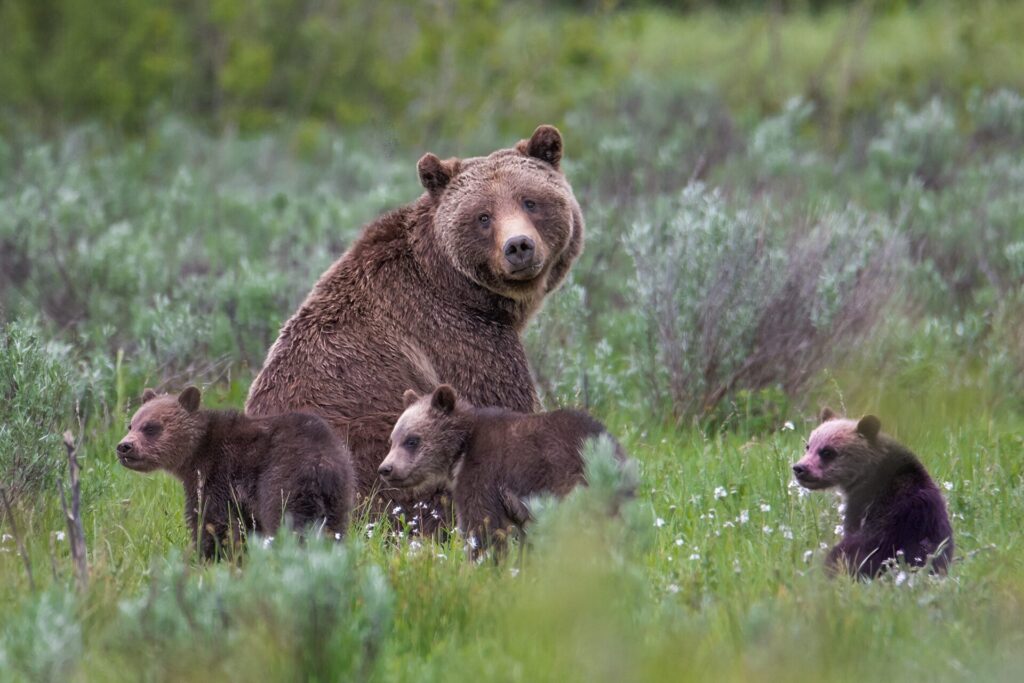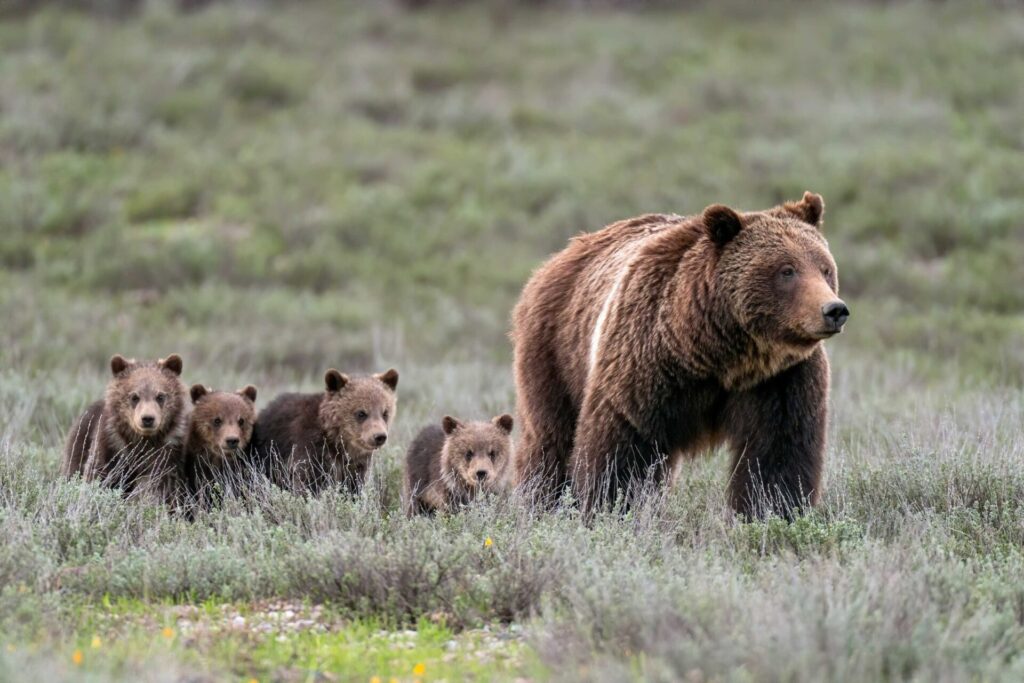
In the serene wilderness of Grand Teton National Park, a tragic event has unfolded that has captured the hearts of wildlife enthusiasts around the world. Grizzly 399, often hailed as the “World’s Most Famous Bear,” met a grievous end on a fateful Tuesday night, October 22nd, struck down by a vehicle in the picturesque but perilous Snake River Canyon.
Born in the winter of 1996 in the remote Pilgrim Creek of Wyoming, Grizzly 399 had become a symbol of the wilderness in the Greater Yellowstone Ecosystem. Known for her imposing stature—standing over 2 meters tall on her hind legs and weighing 181 kilograms—she was a majestic sight that drew thousands of visitors yearly.

The allure of Grizzly 399 extended far beyond her physical attributes; it was her remarkable story of survival and motherhood that endeared her to many. Over the years, she successfully raised 18 cubs, with eight reaching adulthood, a testament to her resilience and maternal instincts in the wild.
Her presence was a boon for wildlife photographers and nature lovers, making her one of the most photographed grizzly bears in the world. Social media platforms buzzed with updates on her wanderings and wellbeing, building a community of followers and bear advocates who followed her life closely.

However, the very trait that made Grizzly 399 a legend—her proximity to human habitats and roads—also led to her untimely demise. The tragic incident has reignited discussions on wildlife management and the increasing conflicts between growing bear populations and human activities.
The death of Grizzly 399 is a stark reminder of the fragile coexistence between wildlife and human development. As the community mourns the loss of this iconic bear, it also faces the harsh reality of wildlife vehicle collisions, which remain a significant threat to grizzly populations in the United States. From 2009 to 2023, an average of 3.3 grizzlies per year have died in the Greater Yellowstone Ecosystem due to vehicle strikes.

In remembrance of Grizzly 399, conservation efforts must be intensified to ensure safer habitats for these majestic creatures. Strategies such as constructing wildlife corridors and implementing more rigorous speed limits in national parks could mitigate such tragedies.
The legacy of Grizzly 399 will live on, serving as a poignant call to action for wildlife conservationists and park authorities to foster a safer coexistence between humans and the magnificent species with whom we share our planet.

Leave a Reply